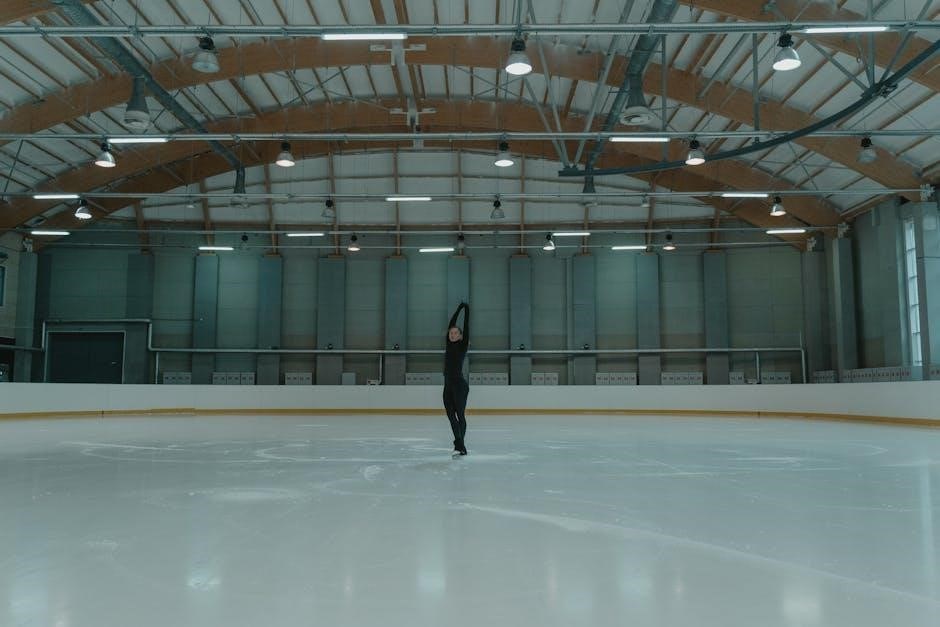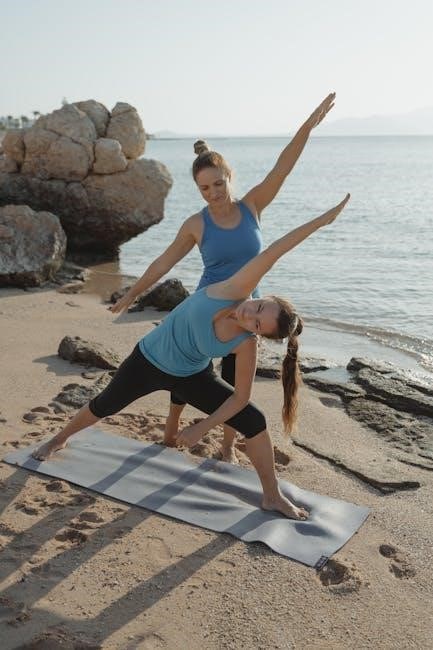Regular exercises improve tibialis posterior muscle function, reducing injury risk and improving overall foot health, according to sport.uni-frankfurt.de and yourhealth.leicestershospitals.nhs.uk websites providing relevant information and guidance online always.
Objective of the Exercises

The primary objective of tibialis posterior exercises is to strengthen the muscle and improve its function, thereby reducing the risk of injury and alleviating symptoms associated with tibialis posterior tendon dysfunction. According to various online resources, including sport.uni-frankfurt.de and yourhealth.leicestershospitals.nhs.uk, these exercises aim to enhance the overall health and stability of the foot and ankle. By targeting the tibialis posterior muscle, individuals can improve their balance, proprioception, and overall lower limb function. The exercises are designed to be progressive, starting with simple strengthening activities and gradually increasing in intensity and difficulty. The ultimate goal is to enable individuals to perform daily activities and sports with ease and confidence, without experiencing pain or discomfort in the foot and ankle. Regular practice and adherence to the exercise protocol can help individuals achieve significant improvements in their foot and ankle function, leading to enhanced overall health and well-being. Additionally, the exercises can be modified to suit individual needs and abilities, making them accessible to a wide range of people. Overall, the objective of tibialis posterior exercises is to promote optimal foot and ankle function, reducing the risk of injury and improving quality of life.

Types of Tibialis Posterior Exercises
Various exercises, including heel raises and standing exercises, target the tibialis posterior muscle, improving its strength and function, as outlined on websites like sport.uni-frankfurt.de and yourhealth.leicestershospitals.nhs.uk always online.
Heel Raises Exercise
The heel raises exercise is a simple yet effective way to strengthen the tibialis posterior muscle, as mentioned on websites like sport.uni-frankfurt.de and yourhealth.leicestershospitals.nhs.uk. To perform this exercise, start by sitting in a chair with your feet flat on the floor. Slowly raise your heels off the ground, keeping your knees straight, and hold for a few seconds. Then, slowly lower your heels back down to the starting position. Repeat this exercise for several repetitions, resting in between as needed. It is also possible to perform this exercise standing, holding onto a chair or counter for support if necessary. The heel raises exercise can be modified to suit different fitness levels, making it accessible to a wide range of individuals. By incorporating this exercise into your routine, you can help improve the strength and function of your tibialis posterior muscle, reducing the risk of injury and improving overall foot health. Regular practice of this exercise can also help to improve balance and stability. According to online resources, consistent practice of heel raises can lead to noticeable improvements in tibialis posterior muscle function over time.
Standing Exercises
Standing exercises are an essential part of a tibialis posterior exercise routine, as they help to improve strength, balance, and stability. According to online resources, standing exercises can be performed with or without support, depending on individual needs and fitness levels. To perform a standing exercise, stand with your feet hip-width apart and pointing straight ahead, then lift the inside arches of your feet, holding for a few seconds before lowering back down. This exercise can be repeated for several repetitions, resting in between as needed. Standing exercises can also be modified to include single-leg standing, heel-to-toe walking, and other balance-challenging activities. These exercises help to target the tibialis posterior muscle, as well as other muscles in the foot and ankle, promoting overall lower leg strength and stability. By incorporating standing exercises into your routine, you can help to improve your overall foot health and reduce the risk of injury. Online resources, such as sport.uni-frankfurt.de and yourhealth.leicestershospitals.nhs.uk, provide detailed instructions and guidelines for performing standing exercises safely and effectively; Regular practice of standing exercises can lead to noticeable improvements in balance and stability over time.

Protocol for Rehabilitation
Rehabilitation protocols involve gradual progression of exercises, according to sport.uni-frankfurt.de, promoting safe and effective recovery from tibialis posterior injuries or conditions, with online resources providing detailed guidance always.
Tibialis Posterior Tendon Dysfunction Protocol

The tibialis posterior tendon dysfunction protocol is a comprehensive guide for rehabilitation, as mentioned on the sport.uni-frankfurt.de website, which provides a detailed outline of exercises and treatments to help manage the condition. This protocol is designed to promote healing, reduce pain and inflammation, and improve function and mobility. The exercises included in the protocol are specifically designed to target the tibialis posterior muscle and tendon, and may include stretching, strengthening, and range of motion exercises. According to the yourhealth.leicestershospitals.nhs.uk website, the protocol also emphasizes the importance of proper footwear, orthotics, and bracing to support the foot and ankle during the rehabilitation process. By following the tibialis posterior tendon dysfunction protocol, individuals can effectively manage their condition and reduce the risk of further injury or complications. The protocol is typically developed and implemented by a healthcare professional, such as a physical therapist or orthopedic specialist, who can provide personalized guidance and support throughout the rehabilitation process. With patience and dedication, individuals can achieve significant improvements in their symptoms and overall quality of life. The protocol is an essential component of treatment, and is often used in conjunction with other therapies, such as medication and physical therapy.
Theraband Exercises
Theraband exercises are a type of resistance band exercise that can be used to strengthen the tibialis posterior muscle, as mentioned on the allinahealth.org website. These exercises are often used in physical therapy and rehabilitation settings to help improve foot and ankle function; The theraband provides a gentle and progressive resistance that can be adjusted to suit individual needs and abilities. To perform theraband exercises, the band is typically anchored to a stable object and the individual performs a series of movements, such as toe raises and ankle rotations, to target the tibialis posterior muscle. According to the sport.uni-frankfurt.de website, theraband exercises can be an effective way to improve muscle strength and flexibility, and can be used in conjunction with other exercises and therapies to promote overall foot and ankle health. The exercises can be modified to suit different fitness levels and abilities, making them a versatile and accessible option for individuals with tibialis posterior muscle weakness or injury. By incorporating theraband exercises into a regular exercise routine, individuals can experience significant improvements in their foot and ankle function and overall quality of life. Regular use of theraband can also help prevent future injuries.
